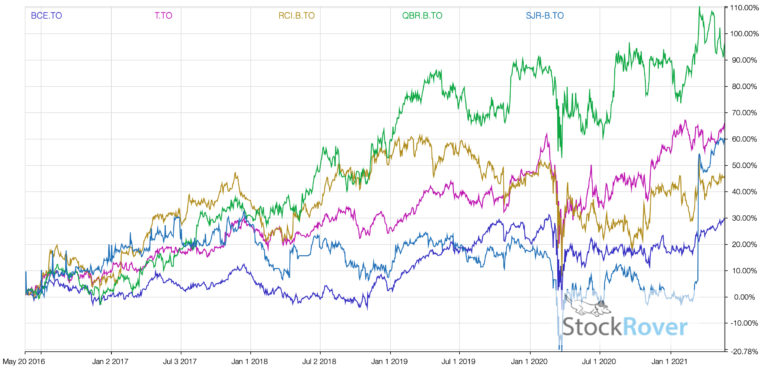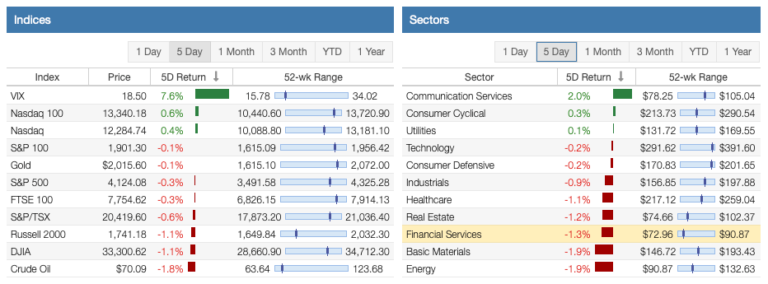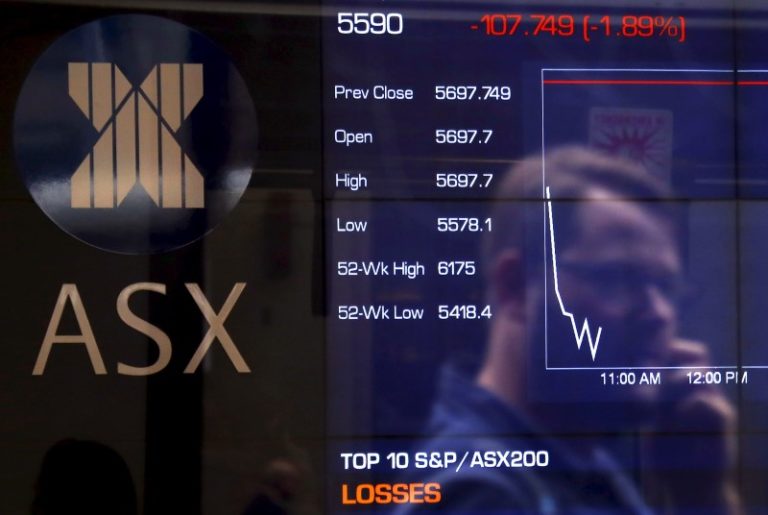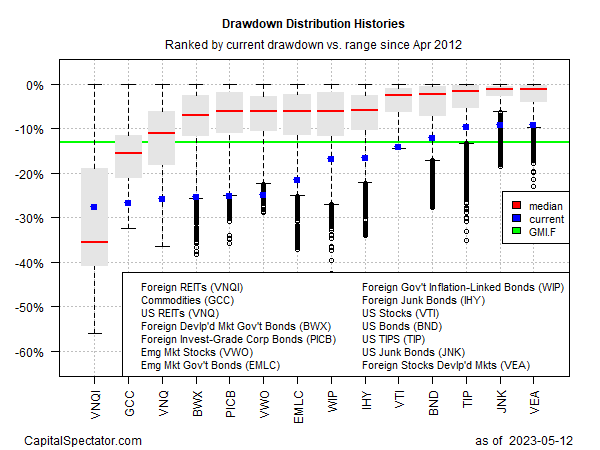
Federal Reserve Tapering in 2021 – Week in Review
Federal Reserve Tapering in 2021
Federal Reserve Tapering in 2021. This past week’s talk has been about the election, but underneath the constant chatter, there has been some interesting economic and financial news. I will first discuss the information about the US Federal Reserve tapering in 2021, which is a significant event and can affect the stock market.

What is Tapering?
What is tapering? In this context, tapering means the Fed will reduce its bond-buying activity. It is a method for the Fed to reverse its quantitative easing (QE) policies. The main goal here is to remove stimulus from the economy by reducing bond-buying and increasing the Federal Reserve’s balance sheet size.
When the Fed is engaged in quantitative easing, it buys bonds, usually US Treasuries and Mortgage-Backed Securities (MBS). The Federal Reserve first started this policy during the Great Recession. The goal for QE is to increase the money supply and reduce bond yields and interest rates. This activity lowers the cost of borrowing money and should theoretically increase economic activity.

When the Fed is engaged in tapering, the US central bank communicates the change in policy to calibrate market and investor expectations. The central bank then gradually tapers by slowing asset purchases and allowing bonds on the balance sheet to mature without being replaced. The Fed can also sell bonds. The goal is to reduce the money supply and economic stimulus.
Tapering is more hypothetical than actual reality. Most central banks have not engaged in prolonged tapering since they fear the so-called taper tantrum. A taper tantrum is a spike in bond yields and a drop in the stock market.
Federal Reserve 2021 Tapering Announcement
Before the COVID-19 pandemic, Janet Yellen and the Federal Reserve were tapering and reducing the Fed’s balance sheet size. The graph above shows the decline in the balance sheet from about 2018 to September 2019. However, COVID-19 resulted in a dramatic increase in the size of the Fed’s balance sheet.
The Fed and Jerome Powell announced that it would be reducing bond-buying by $15 billion a month in November with a reduction of $10 billion for Treasuries and $5 billion for MBS. Another $15 billion in reduction will occur in December. If this pace continues, then the Fed will stop QE in June 2022.
Why is the Federal Reserve Tapering in 2021?
The question of why the federal reserve is tapering is something most investors are likely asking. The basic answer is that the US economy is growing quickly, and inflation is running hot. The GDP declined dramatically during the worst months of the pandemic but bounced back. Since the snapback, the economy has grown 4.5% in Q4 2020, 6.3% in Q1 2021, 6.7% in Q2 2021, and a slower 2% in Q3 2021. Slower growth in Q3 was due to the uptick in COVID-19 cases and supply chain disruptions.

In addition, inflation is the highest since August 2008 as measured by CPI. As a result, prices are spiking, especially for new vehicles caused by the semiconductor shortage and energy. Consequently, used vehicle prices are also spiking. Energy prices have rapidly risen. However, prices for food and other items are also rising, albeit more slowly.


The Fed’s target for inflation is 2%, and the rate is higher than that now. However, the Federal Reserve views the surge in inflation as transitory due to supply chain bottlenecks. It will take a while for the jams to work themselves out. There is also an effort to increase US semiconductor production. Both of those efforts will take time. However, rising bond yields and lower money supply should help in controlling inflation.
Unemployment is low by historical standards. Admittedly, it is not as low as before the pandemic, but it is rapidly decreasing. The actual rate is 4.6%, almost two percentage points lower than the start of the year.

Fiscal Stimulus
Despite the slight slowdown in monetary stimulus, there is still significant fiscal stimulus in the US economy. In addition, the current administration enacted the $1.9 trillion American Rescue Plan for direct relief from the COVID-19 pandemic. Much of this bill was in the form of direct payments, grants, and aid to alleviate short-term economic pain caused by the COVID-19 pandemic.
Furthermore, last night, Congress passed the $1.2 trillion infrastructure bill, and it will be signed and enacted by the current administration. Notably, this bill is the first large infrastructure bill in decades. This bill will have a direct impact on US infrastructure spending. Companies should benefit from supplying materials or building roads, water, bridges, ports, rail, vehicle charging, etc.
Final Thoughts on Federal Reserve Tapering in 2021
The combination of monetary and fiscal stimulus has resulted in robust economic growth. The US Federal Reserve is tapering now but only ever so slowly. However, this action indicates that after being far from normal the US economy is performing better. The stock market responded favorably, unlike the last time the Fed conducted a taper when the stock market experienced a taper tantrum. The main benefit should be that inflation will come down. That being said, the month-over-month change for the CPI is declining after having peaked in Q2 2021. After successful year for 2019, and tumultuous but good year for 2020, 2021 has been a winner for the stock market.

Dividend Power has partnered with Sure Dividend, one of the best newsletters for dividend stock investing. The newsletter comes out monthly and highlights their top 10 picks. A lot of effort goes into analyzing hundreds of stocks, doing much of the work for you. They have over 8,000 subscribers, and it grows every month. So, sign up for the Sure Dividend Newsletter*. You can also use the Sure Dividend coupon code DP41off. The regular price for The Sure Dividend Newsletter* is $159 per year and the reduced price through this offer is $118 per year. There is a 7-day free trial and refund grace period as well. So, there is no risk.
Suppose you are interested in higher-yielding stocks from the Sure Retirement Newsletter*. The same coupon code, DP41off, reduces the price by a little over 25% or $41. The regular price of The Sure Retirement Newsletter*is $159 and the reduced price through this offer is $118 per year.
Suppose you are interested in buying and holding stocks with a rising income from the Sure Passive Income Newsletter*. The same coupon code, DP41off, reduces the price by a little over 25% or $41. The regular price of The Sure Passive Income Newsletter* is $159 and the reduced price through this offer is $118 per year.
Chart or Table of the Week
Today I highlight Lockheed Martin (LMT). The stock price plunged in response to third-quarter earnings results. The company highlighted three pain points for their business. First, Lockheed Martin is rebasing F-35 revenue growth. Second, the withdrawal from Afghanistan will reduce sales. Third, the company is facing supply chain disruptions and accelerating payments to suppliers. The stock is been down (-8.7%) in the past 1-year and (-4.3%) year-to-date and is trading below its 50-day and 200-day EMA. The forward dividend yield is up to about 3.3%, higher than the trailing 5-year average of 2.62%. The stock is also undervalued based on the price-to-earnings (P/E) ratio. Investors may want to look at this Dividend Contender. The screenshot below is from Stock Rover*.

Dividend Increases and Reinstatements
I have created a searchable list of dividend increases and reinstatements. I update this list weekly. In addition, you can search for your stocks by company name, ticker, and date.
Dividend Cuts and Suspensions List
I updated my dividend cuts and suspensions list at the end of September 2021. The number of companies on the list has risen to 538. Thus, we are well over 10% of companies that pay dividends, having cut or suspended them since the start of the COVID-19 pandemic.
There were seven new companies added to the list this past month. The seven companies were International Paper (IP), CatchMark (CTT), Permian Basin Royalty Trust (PBT), Permianville Royalty Trust (PVL), San Juan Basin Royalty Trust (SJT), PermRock Royalty Trust (PRT), and Sprague Resources (SRLP).
Market Indices
Dow Jones Industrial Averages (DJIA): 36,328 (+0.40%)
NASDAQ: 15,972 (+2.70%)
S&P 500: 4,698 (+1.33%)
Market Valuation
The S&P 500 is trading at a price-to-earnings ratio of 29.6X, and the Schiller P/E Ratio is about 40.0X. These two metrics were down the past three weeks. Note that the long-term means of these two ratios are 15.9X and 16.8X, respectively.
I continue to believe that the market is overvalued at this point. I view anything over 30X as overvalued based on historical data. The S&P 500’s valuation came down as the index companies reported solid earnings for the second consecutive quarter.
S&P 500 PE Ratio History

Shiller PE Ratio History

Stock Market Volatility – CBOE VIX
The CBOE VIX measuring volatility was flat this past week to 16.48. The long-term average is approximately 19 to 20. The CBOE VIX measures the stock market’s expectation of volatility based on S&P 500 index options. It is commonly referred to as the fear index.

Fear & Greed Index
I also track the Fear & Greed Index. The Index is now in Extreme Greed at a value of 85. The Index is up 13 points this past week. This Index is a tool to track market sentiment. There are seven indicators in the Index that are measured on a scale of 0 to 100. The Index is calculated by taking the equally-weighted average of each indicator.
These seven indicators in the Index are Put and Call Options, Junk Bond Demand, Market Momentum, Market Volatility, Stock Price Strength, Stock Price Breadth, and Safe Haven Demand.
Market Momentum indicates Extreme Greed.
Safe Haven Demand is in Extreme Greed.
Put and Call Options are signaling Extreme Greed.
Junk Bond Demand indicates Extreme Greed.
Stock Price Breadth indicates Greed.
Stock Price Strength is signaling Neutral.
Market Volatility is set at Neutral.

Economic News
The US Energy Information Administration reported that US commercial crude oil stockpiles increased by 3.3M barrels to 434.1M barrels (6% below the five-year average) for the week ending October 29th. Crude oil refinery inputs averaged 15.0M barrels per day. Gasoline inventories decreased by 1.5M barrels (3% below the five-year average). Refineries operated at 86.3% of their operable capacity, as gasoline production increased to an average of 10.2M barrels per day.
The U.S. Bureau of Labor Statistics reported the unemployment rate dropped to 4.6% in October as 531,000 jobs were added, this follows September upwardly revised 4.8% and 312,000 jobs. Leisure and hospitality added 164K jobs and is down some 1.4M jobs over February 2020. Professional Services reported (+100K) for October, (-215K) since February 2020. Manufacturing came in at (+60K), helped by gains in motor vehicle and parts (+28K), and is down (-270K) over February 2020. Transportation and warehousing reported (+54K), showing a (+149K) increase over February 2020. Education reported decreases in both local (-43K) and state (-22K). Overall education jobs are down with private (-148K), state (-205K), and local (-370K) as compared to their pre-pandemic levels.
Thanks for reading Federal Reserve Tapering in 2021 – Week in Review!
Here are my recommendations:
If you are unsure how to invest in dividend stocks or are just getting started with dividend investing. Take a look at my review of the Simply Investing Report. I also provide a review of the Simply Investing Course. Note that I am an affiliate of Simply Investing.
If you are interested in an excellent resource for DIY dividend growth investors. I suggest reading my Review of The Sure Dividend Newsletter. Note that I am an affiliate of Sure Dividend.
If you want a leading investment research and portfolio management platform with all the fundamental metrics, screens, and analysis tools you need. Read my Review of Stock Rover. Note that I am an affiliate of Stock Rover.
If you would like notifications about when my new articles are published, please sign up for my free weekly e-mail. You will receive a free spreadsheet of the Dividend Kings! You will also join thousands of other readers each month!
*This post contains affiliate links meaning that I earn a commission for any purchases that you make at the Affiliates website through these links. This will not incur additional costs for you. Please read my disclosure for more information.
Published at Sun, 07 Nov 2021 04:00:00 -0800




